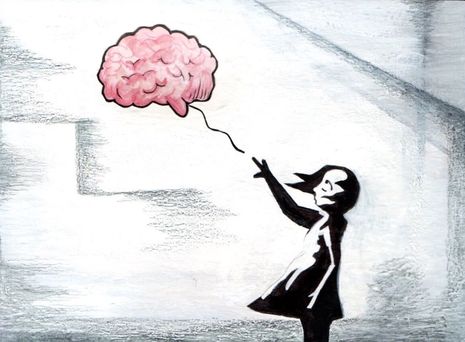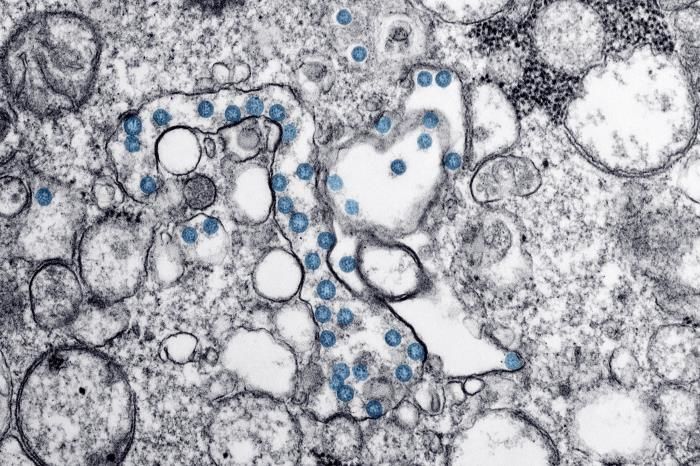The Human Brain: Fact and Fiction
Sambhavi Sneha Kumar separates brain fact from brain fiction, using the latest research from a field in which misconceptions are rife.

The precise functioning of the brain still remains one of the greatest scientific mysteries to humanity. The more we discover, the more questions we seem to unearth - and, often, information presented to us is not strictly accurate. Many of the ‘facts’ presented in movies and news articles are in reality misinterpretations, exaggerations or pure speculation.
We Only Use 10% of Our Brains
This is perhaps one of the most widely held misconceptions about the human brain - a 2013 study found that 65% of Americans believe it to be true. Indeed, it is a tantalising idea - if we currently utilise such a small proportion of our mental ability, the potential for humanity could be immense. People have falsely explained the intelligence of some of the world’s greatest minds, such as Albert Einstein, by claiming that they were capable of using more than 10% of their brain. The concept has been seized by the entertainment industry: the 2014 film Lucy, starring Scarlett Johansson, focuses on a young woman who takes a drug that allows her to access an ‘abnormally high’ percentage of her brain, giving her abilities such as telekinesis and insensitivity to pain.
However, analysis of this concept proves it to be untrue. Parts of the brain may be more or less active based on what we are doing but it is simply not true that huge portions are dormant at any one point in time, even in sleep. This has been demonstrated by medical imaging techniques such as fMRI. Furthermore, if only 10% of the brain was functional, damage to certain regions should leave sufferers unaffected, whereas in reality any variant of brain injury can have profound effects. It is also worth considering the energy consumption of the brain, which, despite only accounting for approximately 2% of body mass, can utilise up to 20% of the body’s energy reserves even at rest. If much of the brain were inactive, it would be unlikely to have such high energy demands.
Whilst we do use most of our brains to function, we equally do not fire every neuron at maximal capacity at the same time. In fact, if this were to happen the body would likely undergo a catastrophic seizure, consuming huge amounts of energy and leading to a loss of consciousness - not quite the superhuman abilities at which literary or historical fiction might hint.
People Can Be Right or Left Brained
Within the bilateral ‘symmetry’ of the human body, the concept of a dominant side is well established. As well as right or left handedness, we demonstrate ocular dominance (the tendency to prefer visual input from one eye over the other) and cardiac dominance (based on whether it is a branch of the right or left coronary artery that supplies certain parts of the heart). Therefore, it is easy to see how the popular notion that people can have a dominant side of their brain has emerged. This idea emphasises how those who are ‘left brained’ tend to be more logical and analytical, whereas those who are ‘right brained’ are more creative and free-thinking - essentially, an inherent tendency that determines key aspects of our personality.
The basis for this myth is quite understandable - specific functions are localised to certain regions of the brain, including being restricted to either the left or right hemisphere. For example, Broca’s area and Wernicke’s area, associated with language production and recognition respectively, are located on the left side of the brain (though Broca’s area does have a homologue in the right). Due to this, left sided brain damage can lead to varying degrees of aphasia (impaired speech production or understanding), depending on extent and location.
However, this regional specificity is not fixed. If a particular part of the brain, or even a whole hemisphere, is lost due to trauma, its roles can be assumed by neighbouring parts. We can see this happening due to brain remodelling following accidental trauma, and even following certain therapeutic procedures. A study conducted by the John Hopkins hospital in the USA investigated the effects on intellectual ability of unilateral hemisphere removal as a treatment for severe epilepsy. Their findings showed that there was no significant change between the pre-surgery period and at follow up.
The concept of having a dominant side seems to be far too absolute. It is possible for individuals to show higher levels of neural connections in certain parts of the brain, but individuals do not have a natural tendency to be ‘left or right brained’.
We Have Five Senses
This is less of a myth and more of an oversimplification. Whilst its true that the basic five senses (sight, hearing, smell, taste and touch) are hugely important, if we define ‘sensation’ as the process of detecting a stimulus and providing a signal that may be needed to bring about a response, it is clear that we do not just have five senses - there are many more. Interoception is the process of detecting stimuli from internal organs and tissues and is arguably more important for our survival than the external senses. For example, systems based on osmoreceptors allow us to monitor the solute concentration of our internal body fluids, and chemoreceptors monitor the pH (acidity), oxygen and carbon content of our blood.
Even when just considering the five ‘basic’ senses, they are not necessarily distinct from another.
Individuals with the condition synesthesia can perceive a certain sensory stimulus as being integrated with others. One of the most common presentations involves colours being associated with particular sounds - many famous names of the music industry have claimed to have a degree of sound-to-colour synesthesia that inspires their work, including Brendon Urie, Billie Eilish and Charli XCX.
There are still many questions about the human brain that remain unanswered - for example, the intricacies of consciousness and our ability to store memories remain a mystery. In a field where so much is unknown, misconceptions, as ever, abound.
 Features / Should I stay or should I go? Cambridge students and alumni reflect on how their memories stay with them15 December 2025
Features / Should I stay or should I go? Cambridge students and alumni reflect on how their memories stay with them15 December 2025 News / Dons warn PM about Vet School closure16 December 2025
News / Dons warn PM about Vet School closure16 December 2025 News / Cambridge study finds students learn better with notes than AI13 December 2025
News / Cambridge study finds students learn better with notes than AI13 December 2025 News / News In Brief: Michaelmas marriages, monogamous mammals, and messaging manipulation15 December 2025
News / News In Brief: Michaelmas marriages, monogamous mammals, and messaging manipulation15 December 2025 Comment / The magic of an eight-week term15 December 2025
Comment / The magic of an eight-week term15 December 2025










